

Bulgari New Octo, full review
The watchmaking web did not remain indifferent when Bvlgari integrate the manufactures Genta & Roth; some observers were skeptical about models like the Octo finding a place and legitimacy in Bvlgari's horologic department.
But one has to admit that the Octo not only remains in the catalog, but more importantly that its design has been revamped and even exalted.
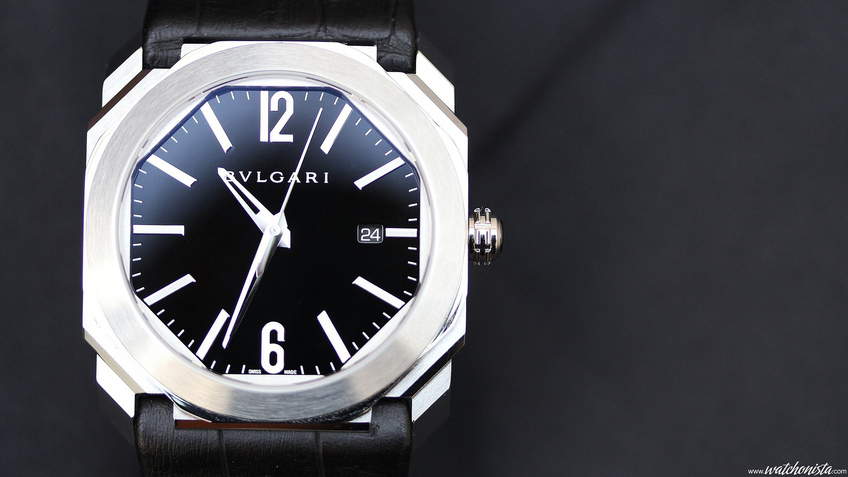
The challenge Bvlgari undertook with the new Octo, was to streamline a range whose multiple variants did not allow for its essence to be extracted.
Mr Guido Terreni interview about the new Octo.
The "savoir-faires" needed to make the new Octo
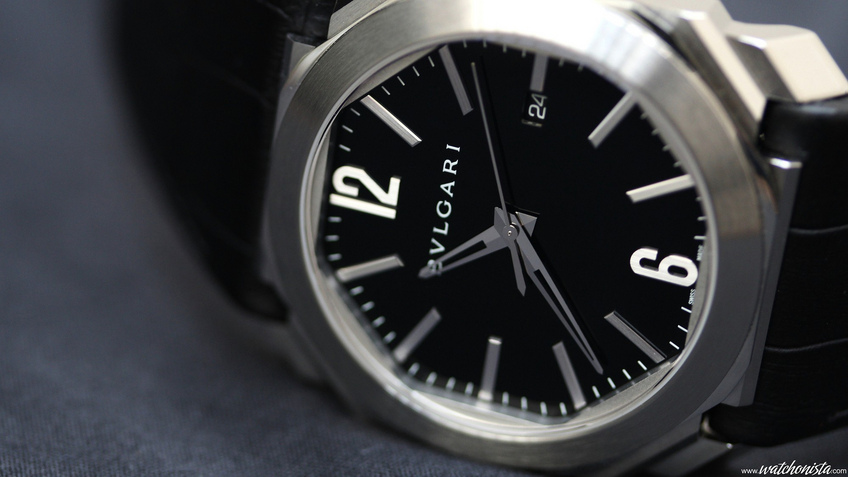
What was drawing our attention in the previous design was that contrary to the Nautilus or to the Royal Oak, the dial was rather complex and sometimes overly ornate in the most colored versions.
And that finally the overabundance of details hid the essence of this watch, namely the contrast between its geometric shapes: circles, squares and octagons. Cleaning the dial of its retrograde sub-dials and getting rid of the bezel's useless screws gave birth to a high-end streamlined piece. The strenght of the brushed bezel is surprising for a dressy watch. This power lies in the octagonal ring sitting between the case and the bezel; its mirror finish is quite discreet and it takes a few minutes to understand from where the impact it conveys comes, when one slips the watch on one's wrist.

In fact, I experienced the same sensation as when I wore a Panerai for the first time, many years ago: a mix of brutality and of refinement quite unique and typically Transalpine. Undoubtedly this Bulgari Octo has been "Italianized". But one has to understand that, contrary to a Luminor Betarini, the Octo is more refined than brutal. But whereas in many cultures (notably in France) one very often starts from a rough piece that undergoes multiple transformations before it is refined, in Italy one starts from a rough piece and directly refines it. These products have the particularity of keeping the nature's bestiality with a luxury finish which only the best craftsmen can achieve. Therefore, it is an intense piece which is not a classic dressy watch, but a sports-chic watch. From this point of view, the partnership with Maserati is quite coherent. But contrary to a Maserati car, it is a relatively discreet watch in daily life, without polished metal and no showy colors or finishes, a piece whose elegance is intended for connoisseurs; for that matter, your relatives (non watch-lovers) will more readily recognize the "Bvlgari" written on the dial, than they will be able to discern the wonderful contrast between the bezel, the polished ring and the watchcase. Therefore, it is a product which will offer several levels of interpretation, depending on its public. It will also bring advantages to the new watch-lover who acquires an Octo Bvlgari: with his increasing level of watchmaking knowledge, he will progressively discover the multiple aspects of his watch.
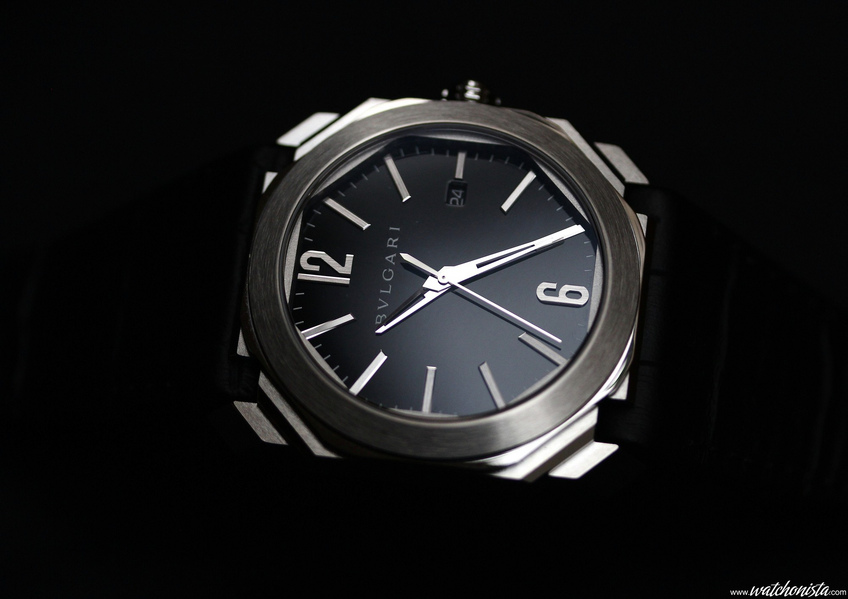
The dial is undoubtedly the most paradoxical part of this piece. In spite of a medium diameter (41.5mm) and a relatively thick bezel, its aperture looks extremely wide; this effect is probably due to the lacquered finish, providing a very pure and shiny black which stands in sharp contrast with the almost white steel of the case. But if visually it is a success, I hope that the dial's wide surface will be utilized in future versions as a showcase for materials or textures, for example Lapis-Lazuli or finishes such as a Vasarely-style geometric engine-turning...

The hands amplify the watch's sporty look. By choosing hands with a classic design but sporty dimensions, Bvlgari opted for a consensus which pays off. They are not luminescent and while it obviously improves the look, it is inevitably a hindrance at night...
Yet, the watch remains quite legible in the dark, as the large polished hands catch the faintest glint of light.
Bvlgari kept the date functionality, a practical choice. In real life, its aperture is matte enough to remain unnoticeable between the shiny dial and the brushed bezel.

On the wrist, the watch looks far more sizable than one could assume with its 41.5mm; this effect comes from the dial's aperture and from the seemingly square case, which is actually octagonal. The watch is even more imposing as the alligator wristband is very well made and provides a bit of "power wrist strap" look to the whole.
Personally, I prefer the stainless steel case, which contrasts better with the black dial.
This color does not captivate me as much on the gold version; I would prefer a dark chocolate dial with matching leather. But as mentioned earlier, the range just started, and fashionable versions are probably being prepared.

Finally, the last noticeable feature and the most important relative to the continuous level of quality is the caliber. Certainly this Octo is not yet fitted with an “In-House” manufactory movement. It is fitted with the BLV193, based on the Vaucher VMF3000, personalized by Bulgari. The specifications of this 11.5 lignes movement are quite common: 28.800v/h, with less or more a 50-hour power reserve delivered by two barrels for optimal torque. It is only 3.7mm thick, which allows for a thin watch.
But its real interest also lies elsewhere: one has to be conscious that Vaucher's quality level begins where ETA's stops and that even the basic productions reach quality levels bordering on Fine Watchmaking.
And where it becomes exciting, is when one can afford a movement with a level of finishes almost as high as Fine watchmaking, in a piece whose price is much lower.
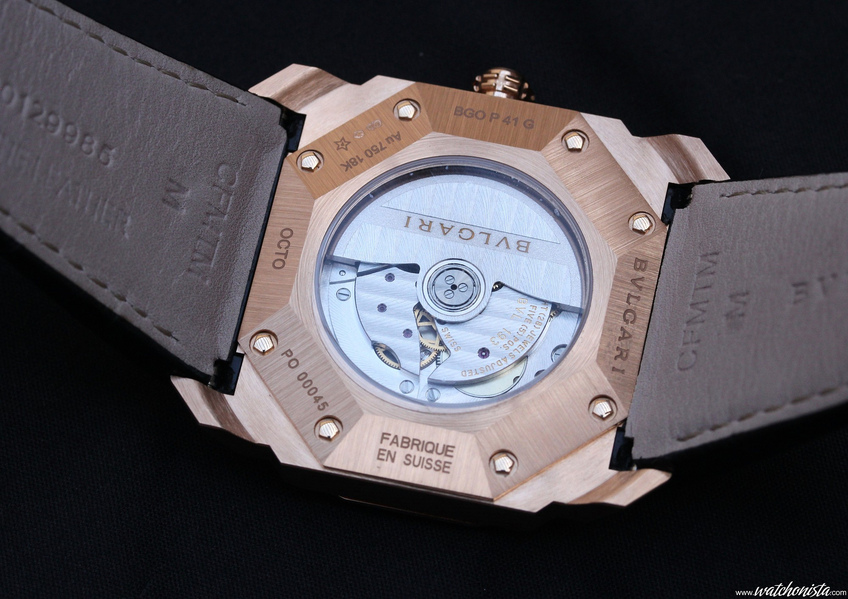
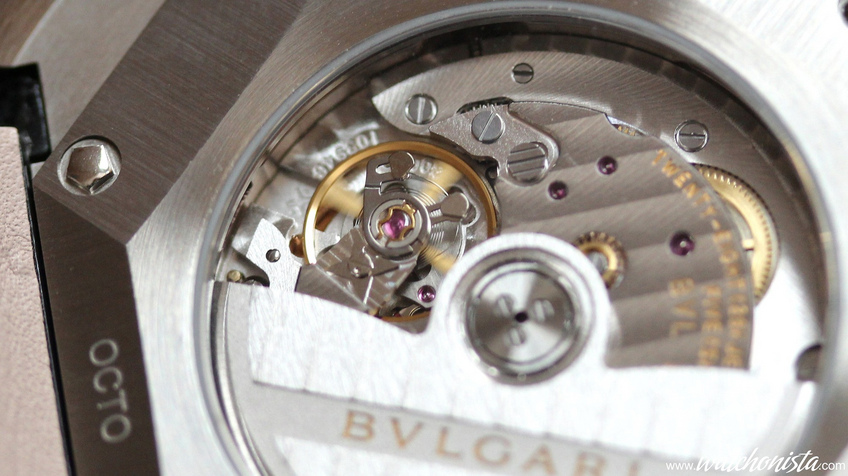
With this nice caliber and at last a streamlined design, this Bulgari Octo is better than a successful hybrid. More than ever, it is part of the prestigious lineage of offbeat sports-chic watches from the 70's, created by a certain Mr. G.






